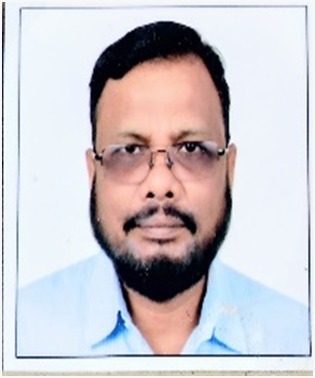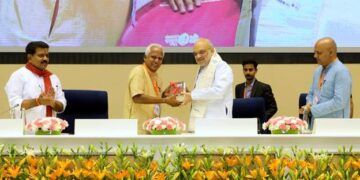
71% of global deaths are attributable to Non-Communicable Diseases (NCDs). India is also experiencing rapid demographic and epidemiological transitions with a steep rise in the burden of lifestyle related chronic NCDs. NCDs are estimated to account for 63% (6.2 million deaths) of all deaths in India of which cancer attributes to overall 9% of the overall mortality. India has about 9.5 million deaths a year, or about one in six of all deaths worldwide (WHO). Out of total deaths in India, cardiovascular diseases lead with 27% overall mortality cause followed by chronic respiratory diseases (11%), cancers (9%), diabetes (3%) and others (13%) (WHO).
Cancer is the second leading cause of death globally, accounting for an estimated 9.6 million) deaths (14% of total deaths), out of total 68 million (WHO) deaths worldwide every year. Cervical cancer ranks as 4th most common cancer in women globally (66,2301 new cases in 2022) and the 2nd leading cause and death of female cancer in India. As per the Indian Council of Medical Research (ICMR), the estimated number of Cancer Cases at a point of time (point prevalence) was 3.65 million (36.5 lakh) cases (old + new) in a year, incidence rate 1.5 million (15 lakh) new cases in a year and 80000 deaths from cancers in a year. Among males, cancers of lung, mouth, esophagus and stomach are the leading sites (major types) across most of the registries. Among females, cancer of the breast is the leading site in 19 registry areas. About 75,000 new cervical cancer cases are diagnosed annually in India in 2020.
An important aspect of cancer prevention initiatives in children should focus on behaviour or lifestyle that prevents the child from developing cancer in adulthood. Chronic infections like HIV, Epstein – Barr virus are risk factors of childhood cancer. There are some viruses, which can cause cancer like Hepatitis B (liver cancer), Human papillomavirus (HPV) (cervical, anal, vaginal, vulvar, penile, and oropharyngeal cancers), Merkel cell polyomavirus (MCV) (skin cancer). There are some bacteria and parasites also causing cancers i.e. Helicobacter pylori (stomach cancer), Schistosome (bladder cancer), Liver flukes (cholangiocarcinoma). These viruses and bacteria are considered as risk factors for many cancers. However, vaccination and screening are available for hepatocellular carcinoma and cervical cancer.
Cervical cancer is preventable by screening asymptomatic women for precancerous cervical lesions and treating the lesions before they progress to invasive disease. It is curable if detected early.
Strategies for Prevention of Cervical Cancer:
1.HPV Vaccination
Human Papillomavirus (HPV) Vaccination: Vaccines are effective in preventing infection with high-risk strains of HPV, which are responsible for the majority of cervical cancer cases. In India, vaccination programs should be promoted for girls between the ages of 9 and 14, ideally before they become sexually active. DCGI has given approval of Cervavac India’s first HPV vaccine [Quadrivalent Human Papillomavirus vaccine (qHPV)] on 12 July 2022. Government of India announced in February 2024, the policy for vaccination of girls in the age group of 9 to 14 years for prevention of cervical cancer.
- In this context of cervical cancer, vaccination and its inclusion in the Universal Immunisation Programme (UIP) would be a major spearhead for the nation. Upon administering this vaccination, it will not only address the cervical cancer burden but also other HPV-related cancers such as vaginal cancer, anal cancer, throat cancer, and genital warts that would be prevented. India’s indigenous cervical cancer vaccine was found to be safe and effective. It should be administered intramuscularly in the deltoid region of the upper arm or in the higher anterolateral area of the thigh. Cervavac is indicated in girls and women 9 through 26 years of age for the prevention of the diseases caused by Human Papillomavirus (HPV).
2.Screening Programs
Population Based Screening (PBS) was launched as a package under Comprehensive Primary Health Care (CPHC) in 2018. Screening targeted of all persons >30yrs age in community for five common NCDs (Diabetes, Hypertension, Oral Cancer, Breast Cancer & Cervical Cancer). Prevention, control & screening services through trained frontline workers (ASHA & ANM), linked with referral support and continuity of care are being implemented in Health & Wellness Centers, now called Ayushman Arogya Mandir (AAM) as a part of CPHC. PBS helps in better management of diseases by the way of early stage of detection, follow up, treatment adherence and awareness of the NCDs.
- Pap smear Test: Regular screening through Pap smear tests is critical in detecting early abnormalities in cervical cells before they become cancerous. Early detection leads to more effective treatment and better outcomes.
- Visual Inspection with Acetic Acid (VIA): This method is especially useful in low-resource settings as it is inexpensive and simple to administer. VIA can detect precancerous lesions in the cervix, and if followed by treatment, can prevent cervical cancer. Visual Inspection with Acetic Acid (VIA) for cervical cancer screening in India is an important step towards prevention of cervical cancer. VIA is simple and inexpensive non-cytological method of detecting precursor lesions in WHO approved VIA for developing countries including India. VIA is done by either trained Staff Nurse or MO of PHC. VIA is naked eye examination of the uterine cervix after application of 5% acetic acid and interpreting the result after one minute.
- HPV DNA Testing: HPV testing is more sensitive and specific than Pap smears and can be a promising strategy for women aged 30 and above. Pilot testing for HPV DNA was successful in 3 States i.e. Andhra Pradesh, Maharashtra and Sikkim and have demonstrated the feasibility and effectiveness of using HPV DNA testing as a primary screening method for cervical cancer, particularly in low-resource settings. HPV testing has demonstrated higher sensitivity and specificity for detecting CIN3+ (cervical intraepithelial neoplasia grade 3 or higher) compared to Pap smear and VIA.
- Public Awareness and Education
- Awareness campaigns about the causes, risks, and prevention of cervical cancer, especially those targeting women and healthcare providers, can increase screening rates and encourage early detection.
- Fostering education on sexual health, including the role of HPV, and promoting safe sexual practices, such as condom use, can also reduce the risk of HPV transmission, thereby incidence of cervical cancer.
- Recognizing and addressing cultural barriers to cervical cancer prevention (such as stigmas around sexual health, lack of awareness about cancer, or traditional beliefs) is essential for successful implementation of prevention programs
- Improving Access to Healthcare
Affordable Healthcare: Increasing the accessibility of screening programs and HPV vaccinations for all women, particularly in rural and remote areas, is crucial. Initiatives in India like Ayushman Bharat have significantly increased access to healthcare services, providing insurance coverage to over 550 million people. This is the largest health assurance scheme in the world, which aims at providing a health cover of Rs. 5 lakh per family per year for secondary and tertiary care hospitalization to over 12 crore poor and vulnerable families that form the bottom 40% of the Indian population. This program aims to alleviate the financial burden on low-income families and improve access to quality healthcare. Union Cabinet approved a major expansion of the AB PM-JAY on September 11, 2024.This expansion is set to benefit around 4.5 crore families, including 6 crore vulnerable senior citizens aged 70 and above who will receive health coverage, regardless of their income. National Health Mission has strengthened healthcare infrastructure in rural areas, ensuring essential services reach underserved communities. To address issues of both communicable and non-communicable diseases cancer, respiratory diseases, and other chronic diseases to achieve progress towards UHC, India launched the Ayushman Bharat, one of the most ambitious health mission. Ayushman Bharat is bringing revolutionary change to the country.
Mobile Clinics and Telemedicine: Utilizing mobile health clinics and telemedicine can help reach women in remote areas who may not have access to traditional healthcare infrastructure.
- Promotion of Healthy Lifestyles
Health Promotion & Awareness about common NCDs including Cancers & its risk factors, Population-based Screening (PBS) at all healthcare delivery levels is necessary. Continuum of Care: Early Diagnosis, Treatment, Follow-Up, Referral and Rehabilitation of people living with NCDs, NCD infrastructure and Human Resource Capacity, Supportive Supervision, Monitoring and Operational Research, Financial Support through Programme Implementation Plan, Cancer Infrastructure are required.
- Tobacco and Alcohol Control: Tobacco use is a known risk factor for cervical cancer. Anti-tobacco campaigns and policies can reduce smoking rates among women, lowering their risk of cervical cancer.
- Nutrition and Health: Promoting a healthy diet rich in fruits and vegetables can strengthen the immune system and reduce cancer risks.
- Strengthening Healthcare Infrastructure
- Training Healthcare Providers: Healthcare providers need to be adequately trained to perform screening tests and provide proper follow-up and treatment for abnormal results.
- Integrating Cervical Cancer Prevention into Primary Healthcare: Cervical cancer prevention can be integrated into existing primary healthcare services, making it more accessible to rural and underserved populations.
- Policy Support and Implementation
- Government Initiatives: The Indian government can enhance efforts by implementing nationwide vaccination programs, subsidizing screening, and supporting cancer treatment infrastructure.
- Public-Private Partnerships: Collaboration between the government, non-governmental organizations (NGOs), and private sector can help raise funds, create awareness, and improve access to care.
- Research and Data Collection
- Ongoing research into the prevalence of HPV strains in India, as well as studies on the effectiveness of various screening methods, will help tailor strategies to the local context.
- Establishing cancer registries and collecting reliable data will help in understanding the burden of cervical cancer and guide effective policymaking.
Cervical cancer is a significant health concern in India, and prevention strategies can be quite effective in reducing its incidence. Here are some key strategies for prevention.
Dr Sudarsan Mandal is Senior Public Health Specialist and ex-DDG (NCD)




